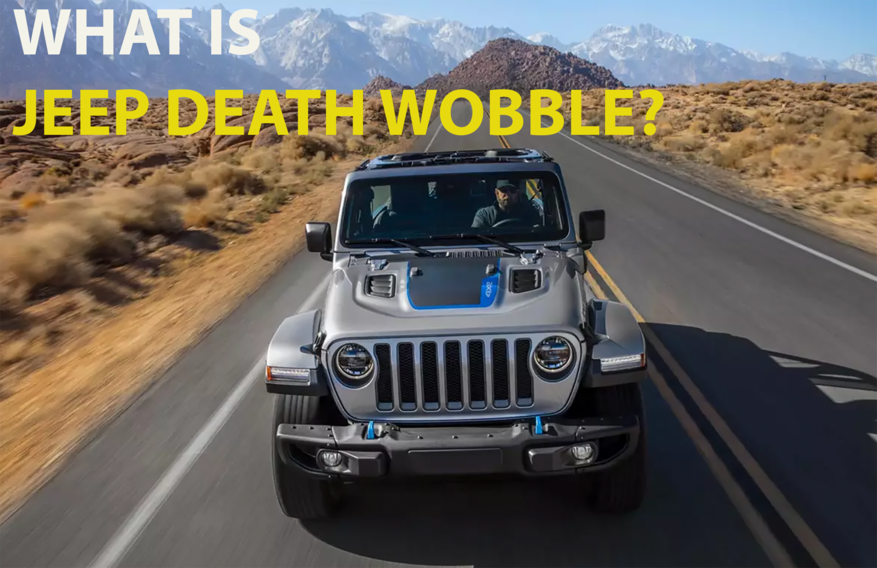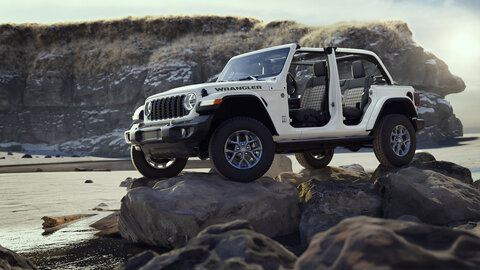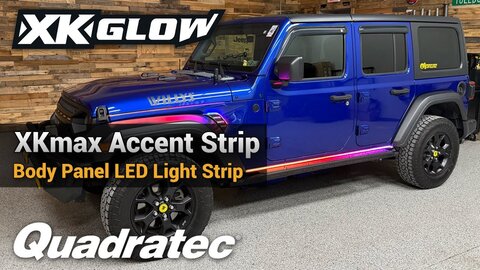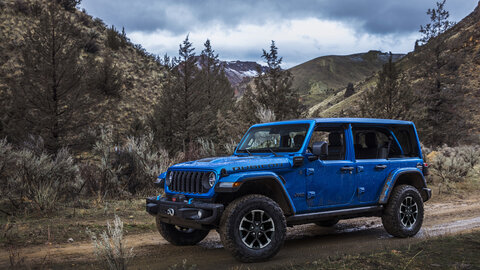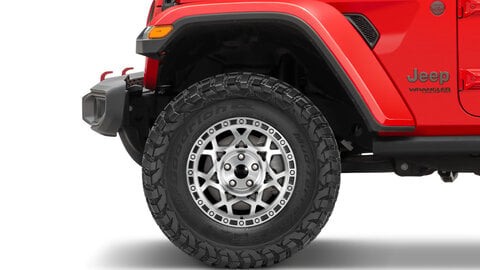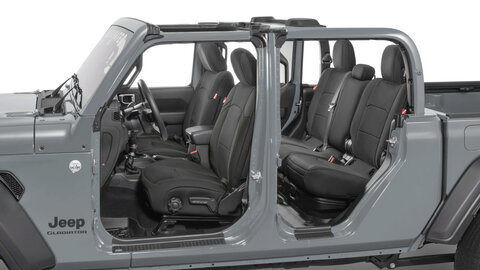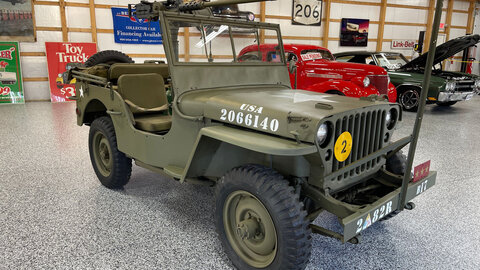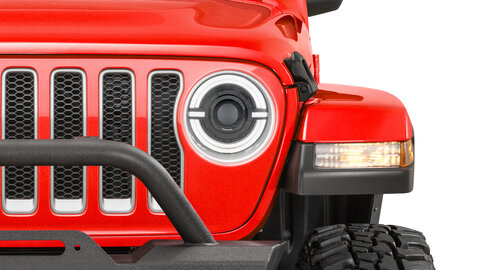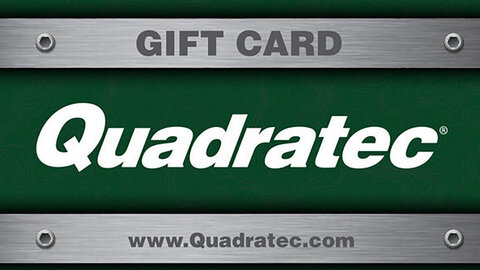by Matt Konkle
Managing Editor
The shake is probably the first thing you notice. Perhaps you hit a rut in the road, or a pothole. And now the steering wheel has a shudder that feels like you are driving over rumble strips. Except there aren’t any rumble strips. Just road.
As you accelerate your Jeep, the vibration gets worse — the shudder deepens until it seems like the whole vehicle is affected.
Maybe it goes away as quickly as it came, or maybe the whole thing forces you to pull over and figure out what the heck is going on with the vehicle.
And that is your first experience with Jeep Death Wobble.
Some of you, though, have probably been through the process before. In fact, there are plenty out there who know all about the wobble. It doesn’t discriminate by vehicle type, size, or age, as death wobble can happen just as easily to a JL Wrangler Unlimited as a CJ-5.
The name, however, is a pretty big misnomer, as no one has actually died because of this problem. Also, for all the shaking and wobbling, the vehicle won’t actually fall apart. The wheels won’t come off. Nothing like that. It is just a matter of keeping your head and using common sense to regain control and safely overcome the situation.
So, now that you have a little background, what exactly is death wobble? What are the causes and best ways to handle the issue when it occurs? And what are some of the most important things to understand in order to fix the problem?
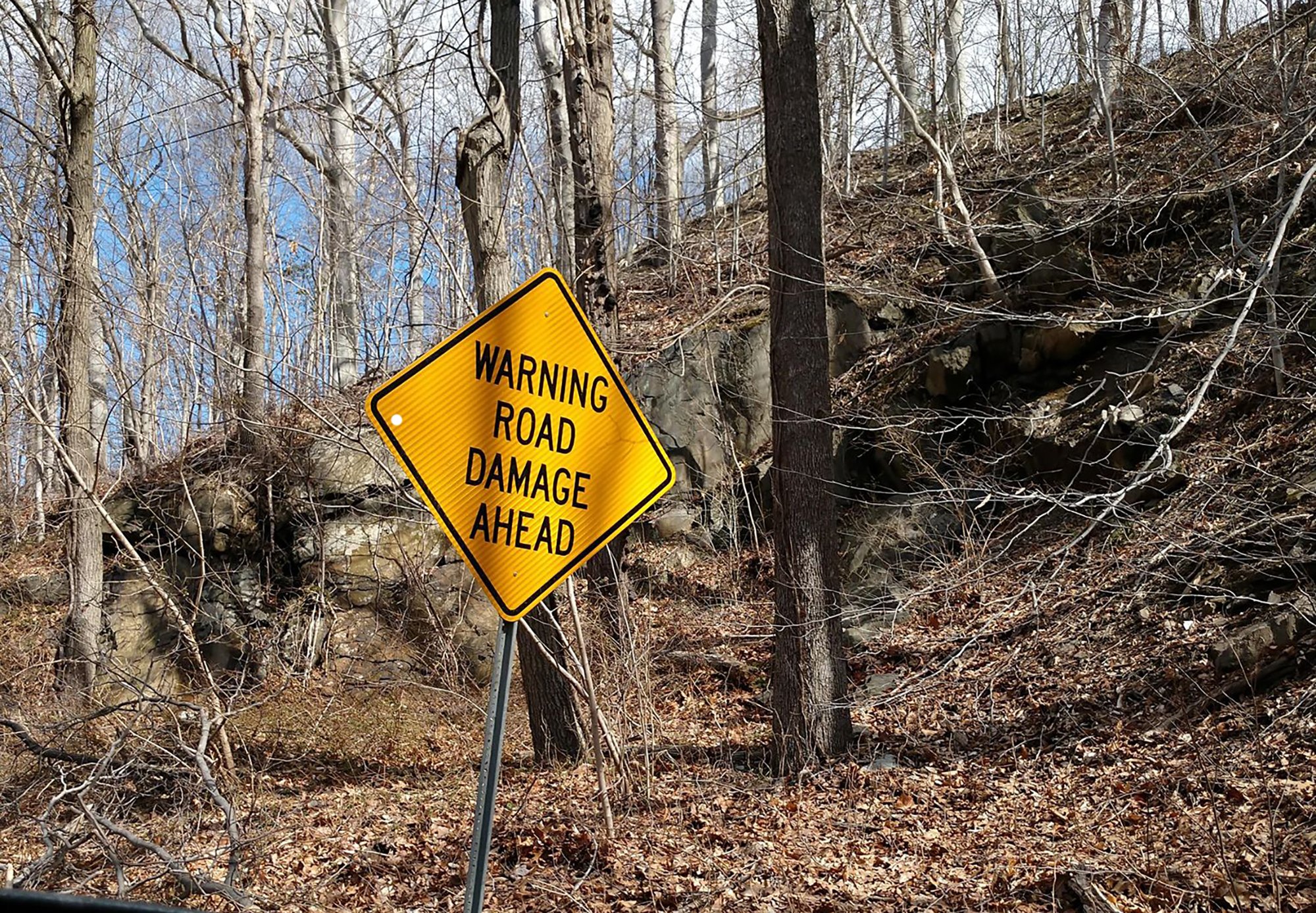
Death Wobble Explained
Quite simply, death wobble is the seemingly uncontrollable side-to-side shaking of a Jeep’s front-end steering components and – by extension – its steering wheel. While its dark name does not really indicate what will happen to you after the problem starts, death wobble does make the Jeep difficult to control and can make you think the whole front end is about to fall apart.
It is an issue inherent to solid axle vehicles and does make for some white-knuckle driving if it suddenly surfaces. But it is not something ‘guaranteed’ to happen. So just because you own a Jeep does not mean you are going to be affected.
However, if it does happen, it usually starts when one tire hits a groove, pothole, or some other bump in the pavement at speeds around 45 miles per hour — or even after a heavy tap on the brake.
Now, death wobble should not be confused with another Jeep issue called ‘Bump Steer’, which is a problem that normally arises after adding a suspension lift to the Jeep. Bump steer occurs when the vehicle darts right or left after hitting a bump in the road, and is easier to identify through improperly installed suspension kits or broken/damaged steering components.
Nor should it be misidentified with vibrations felt at higher speeds, as this is normally caused by an improperly aligned vehicle.
Safely Overcoming Death Wobble
The first thing to do when Jeep Death Wobble strikes is not to panic. That may seem obvious, but it still can be difficult to accomplish when your vehicle hits a bump and starts shaking wildly at higher speeds. It is also important to remember that even though it may feel like you are out of control, the vehicle is still going straight.
Maintain a solid grip on the steering wheel throughout the experience. Not a strangulation hold, but good enough to keep control. Often, the harder you grip the wheel, the more you could damage your fingers or hands from violent steering wheel sways.
As far as resolving the issue, the best way - and really only way - is to bring the Jeep to a stop through controlled braking. Don’t mash the brake pedal, as that will only make the vehicle more difficult to control, and do not give the Jeep gas in hopes of accelerating through the problem. Instead, bring it to a controlled stop on the shoulder, and out of the way of traffic.
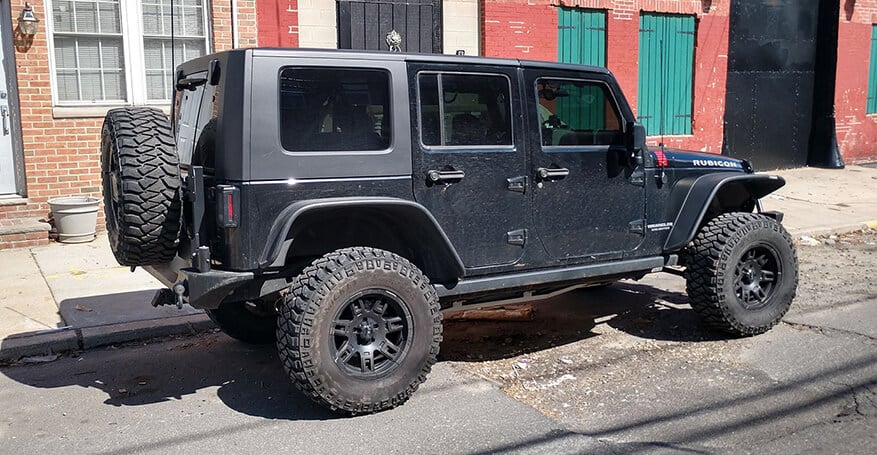
Death Wobble Misconceptions
One of the biggest myths regarding death wobble is that all stock Jeeps are immune, and only lifted Jeeps are affected. This is absolutely false, as any solid front axle vehicle can get death wobble under the right conditions. However, those who have recently added suspension upgrades usually are more likely to experience death wobble than those with stock Jeeps.
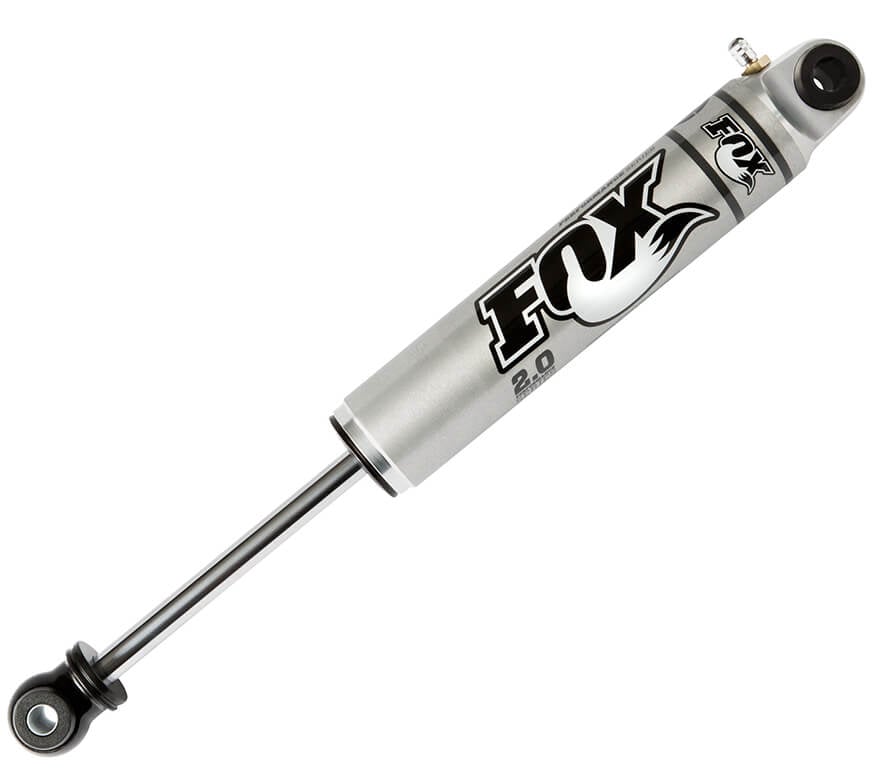
Another incorrect belief is that swapping out the vehicle’s steering stabilizer for a stronger version will solve death wobble. While a steering stabilizer is a good tool to act as a ‘cushion’ for your steering, and help dampen normal steering wander after hitting a rut, a stronger steering stabilizer will only tend to mask the underlying issues. In fact, a steering stabilizer can only make things more difficult to resolve and may even cause more problems down the road.
Why Addressing Death Wobble Is Critical
Ignoring Jeep Death Wobble and hoping it just goes away is not really an option. Obviously, the primary reason to address the issue is safety. Driving with that kind of vibration at higher speeds isn’t really the best for anyone on the road. It also can erode your driving confidence, and could cause accelerated wear and tear on vehicle components — leading to expensive repairs or replacement parts.
Possible Causes of Death Wobble
The effects of death wobble are easy to see (and, yes, tough to experience), but discovering the reasons and causes behind it is a bit more difficult to diagnose. This is mainly because death wobble can be caused by numerous different loose or damaged components throughout the entire steering and suspension system. Or it can be caused by one worn or bad part. There is no ‘one size fits all’ solution. But most likely, if you experience death wobble, it is because your steering and suspension parts have been going bad for some time.
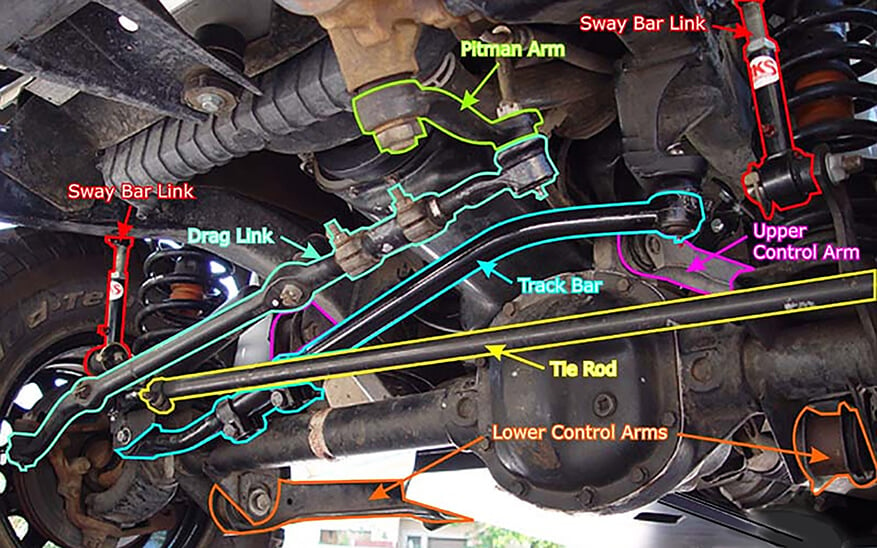
The best place to start understanding and rooting out the causes of death wobble is to crawl under the Jeep and give its steering and suspension a good visual inspection. Components like your front track bar, tie rod and tie rod ends, ball joints, upper and lower control arms, as well as bushings and wheel bearings, should all be checked for excessive wear, damage, or missing parts. In addition, if you have recently installed a new suspension lift, then ensure all that hardware is properly torqued and nothing is loose or out of place.
Another important thing to check is the alignment of your wheels and tires. While these aren’t necessarily a cause of death wobble, any unbalance can certainly make the issue worse. Plus, if you are out of alignment, then getting your wheels set up correctly will save tire life.
Fixing Death Wobble
Like we’ve said before, death wobble can strike all types of Jeeps simply because they have solid front axles. So knowing that, and owing a Jeep, how can you fix the problem and prevent it from happening?
For starters, remember to ignore anyone who says throwing a new steering stabilizer at the problem will solve the issue. We previously covered this as a misconception and, in fact, the best thing you can do when striving to fix Jeep death wobble is to disconnect that stabilizer in order to get a more accurate diagnosis.
Next, take what you’ve learned from your visual inspection and make sure all the bolts in your suspension and steering parts are tightened to proper specs. Basically, if there is any looseness in these bolts, then Death Wobble can take advantage at the right time.
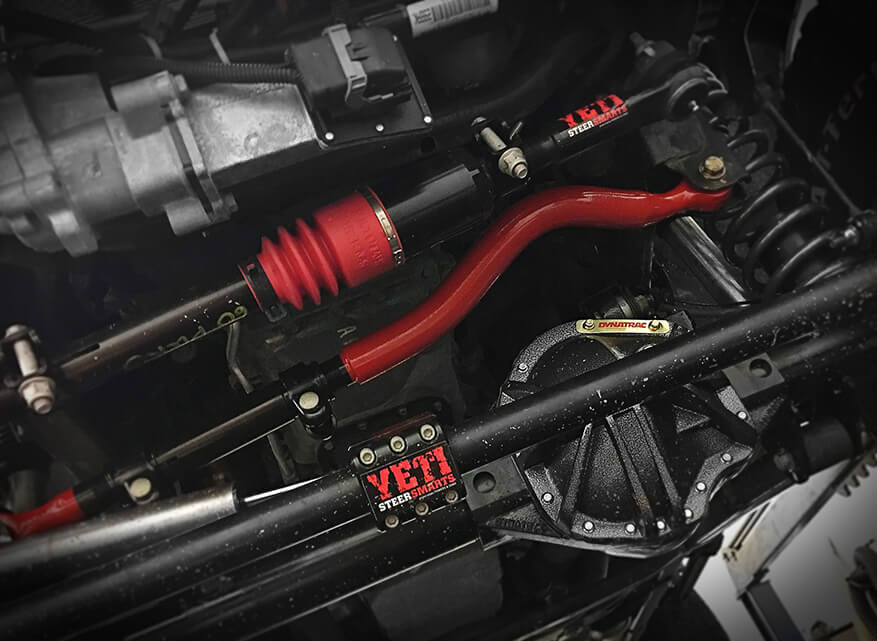
After tightening any problematic suspension bolts, the next thing to attack is your factory track bar. This is a product designed to absorb a lot of force and keep your vehicle’s axle from drifting side to side. Over time though, this force can deform the bar’s frame side bolt hole, causing the bolt to become loose and track bar bushings to wear out. The result can be a significant amount of play in the track bar.
Luckily, is it pretty easy to determine if there is an issue.
Grab a friend and set the Jeep in neutral with the motor off, but key in the ‘on’ position. Have your friend turn the steering wheel back and forth – about a quarter turn each way. Ideally, your track bar should stay firmly in place when this happens. However, if there is play in the track bar and you know the bolt is properly torqued, then either the bushing or bolt may need replacement. Also, if your track bar was moving even with the bolt firmly in place, then your bushing is worn out, and the track bar should be replaced.
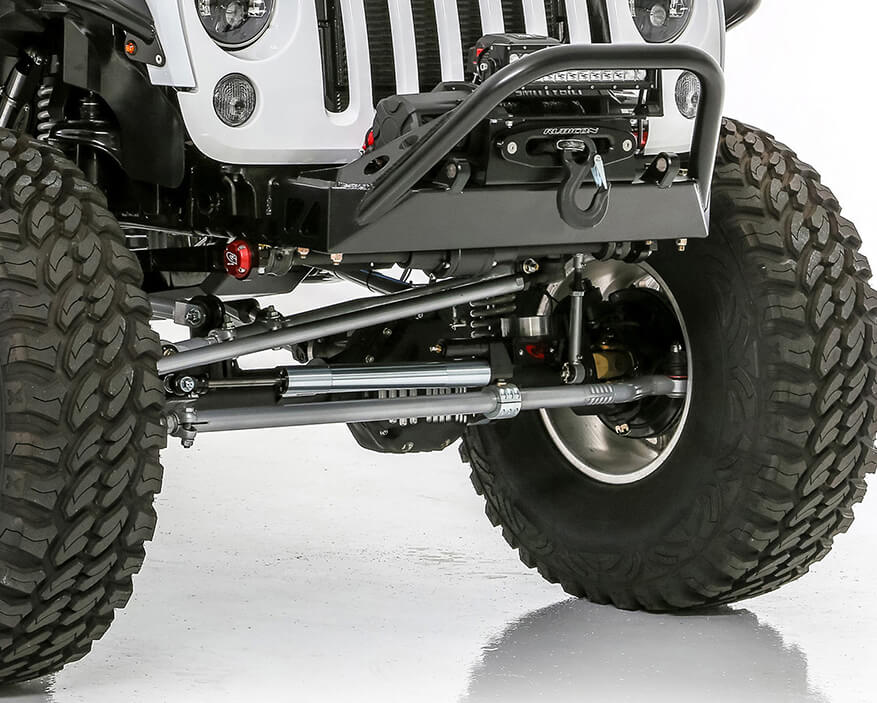
Your Jeep’s tie rod and tie rod ends should definitely be on the hit list as well. To check these, use a jack to lift the front of the Jeep and then have a friend grab one wheel and twist it back and forth. If the tie rod doesn’t move, but the ends seem to wiggle, then they most likely need replacement. Of course, if the rubber boot is torn or damaged, then that is another replacement sign. Plus, if the actual tie rod is bent, then definitely look at swapping out that tie rod. A bent tie rod will not only cause shaky steering wheel syndrome and bump steer but will also exacerbate death wobble and cause excessive tire wear.
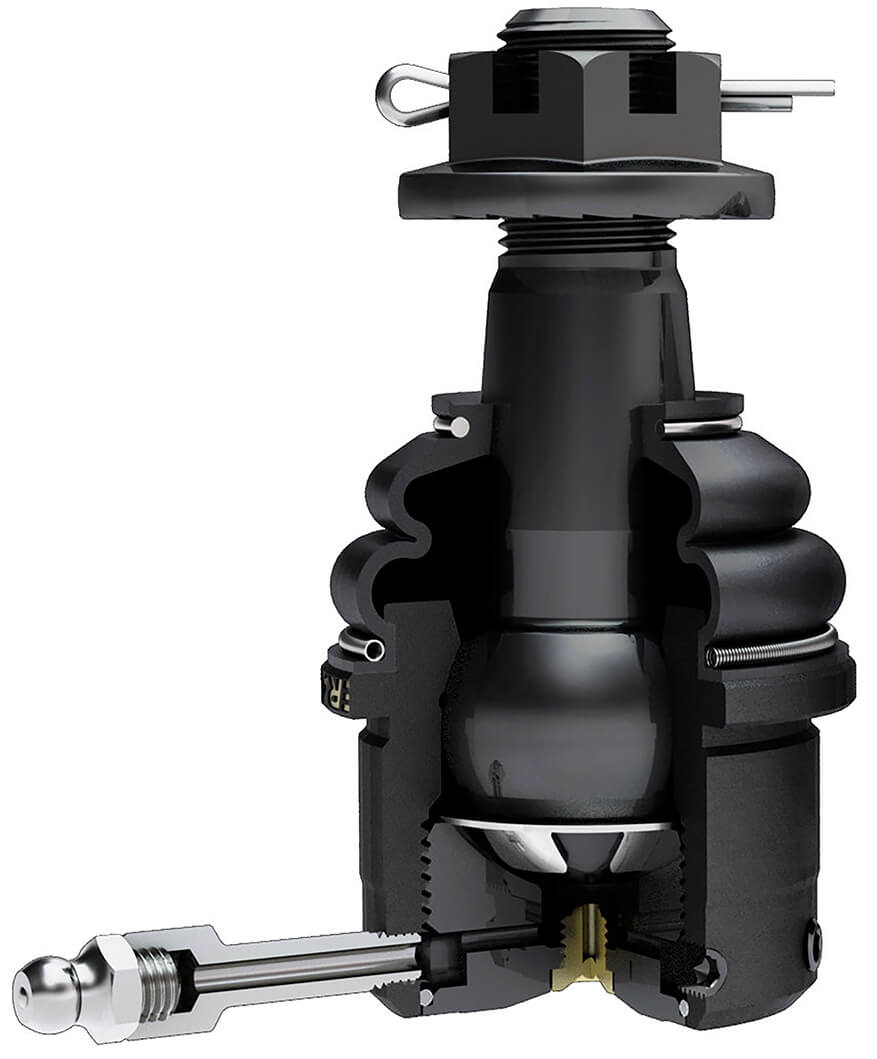
The vehicle’s ball joints are yet another important part to investigate. These ball joints connect the steering knuckle to the axle, are encased in rubber boots filled with grease, and designed to help smooth out steering. If these boots are damaged and grease is leaking, then it is a good bet the ball joints need replacement. You can also lift the vehicle with a jack and check the ball joints by pushing against the tire with a pry bar. If there is any movement in the joint then definitely replace those ball joints.
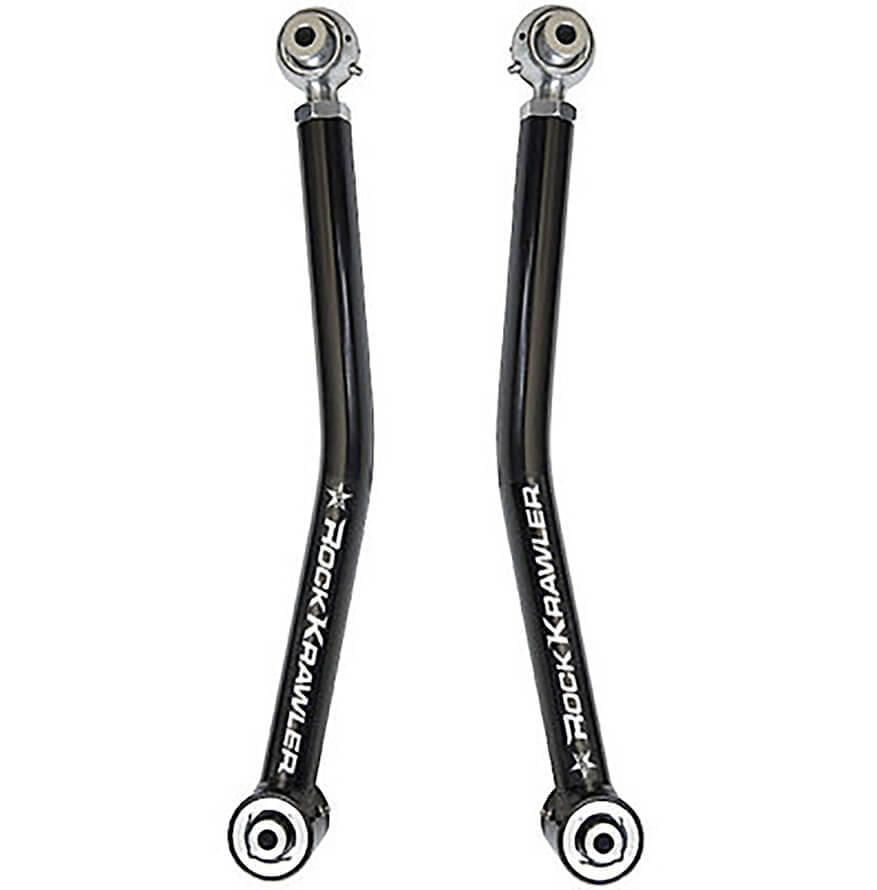
Control arms and control arm bushings can also be an issue, and this is something easily determined with a visual inspection. Basically, if the arms are bent or cracked then it is a good idea to replace the control arm as these parts help ‘control’ the up and down movement of your Jeep’s suspension. Damaged arms remove that control and lead to excessive vibration in the suspension. If the control arms are fine, don’t forget to check the bushings as these rubber pieces can enlarge and wear out over time — affecting the ability of the control arms to do their job.
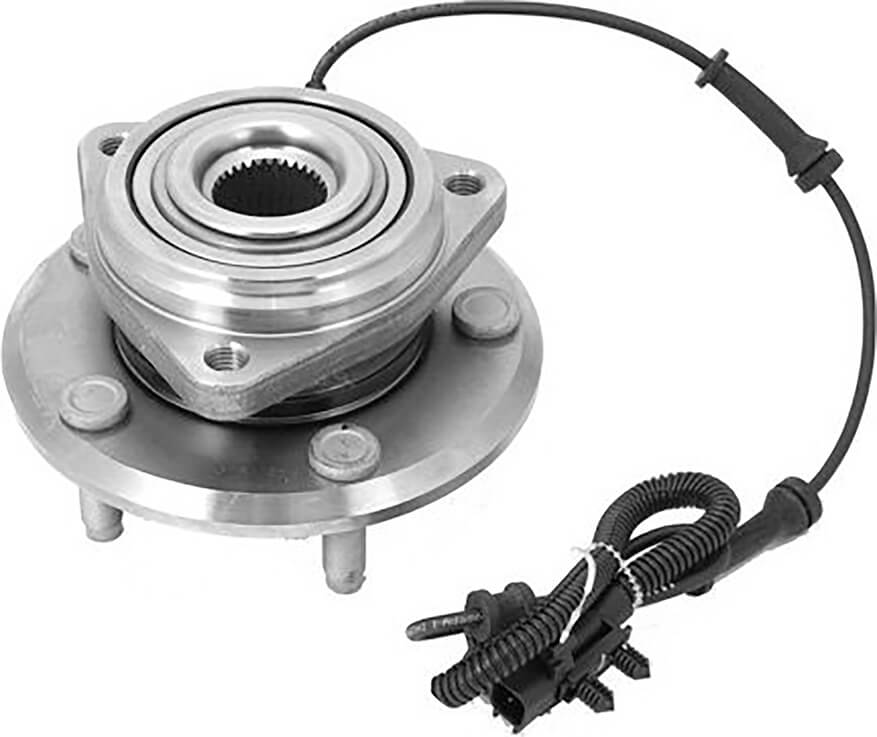
Worn out wheel bearings may contribute to death wobble as well, and are very easy to test. Use a jack to lift one of your Jeep’s front wheels and grasp the tire at the 12- and 6-o’clock position, then wiggle the tire. If you feel movement, then you most likely have a worn wheel bearing. Don’t forget to check the front tire as well.
One other thing to check, which can also have an impact on death wobble, is your tires. Unbalanced, damaged, or improperly inflated tires play a role as something needs to start the wobble. A warped, underinflated or unbalanced tire hitting a bump or pothole can be enough to set the whole Jeep Death Wobble thing in motion.
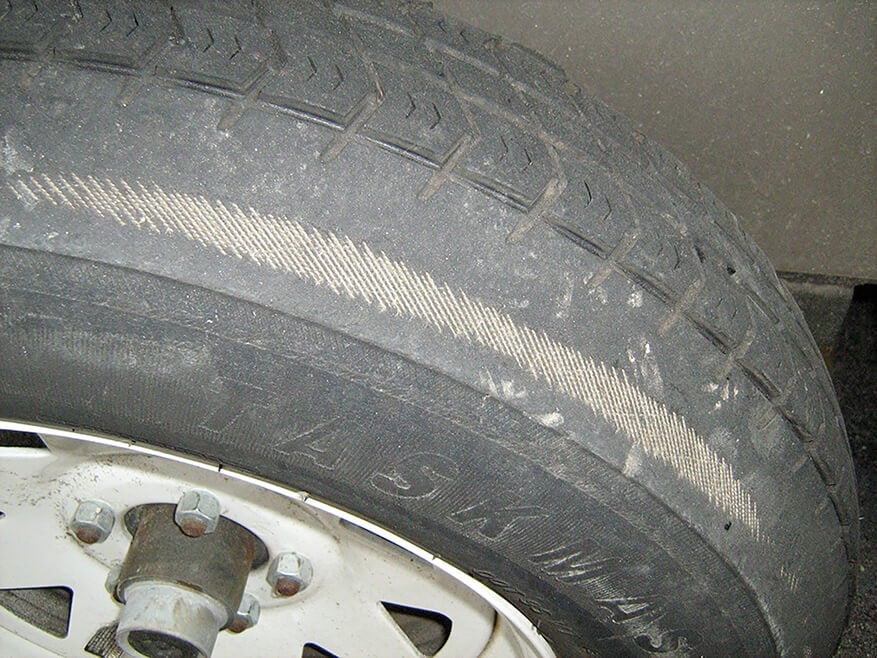
Finally, after installing a new suspension lift or adding new steering and suspension components, you should get a front-end alignment. Make sure you use a shop or mechanic who understands how to deal with 4x4 vehicles and won’t sell you on simply getting a four-wheel alignment — as you do not have independent rear suspension in your Jeep. A good alignment shop will also know how to properly set your vehicle’s caster and toe angle.
Follow Up Maintenance
So with everything now inspected, all those components correctly tightened and maybe even a few parts replaced, the risk of getting that crazy wobble is now drastically reduced. However, the job isn't really over. Truth is, it is never really over.
Regular checks of these components, especially tires and suspension hardware, and specifically after installing any new suspension lift kits or parts, is all part of a proper maintenance plan that will provide peace of mind and help ensure freedom from Jeep Death Wobble .













